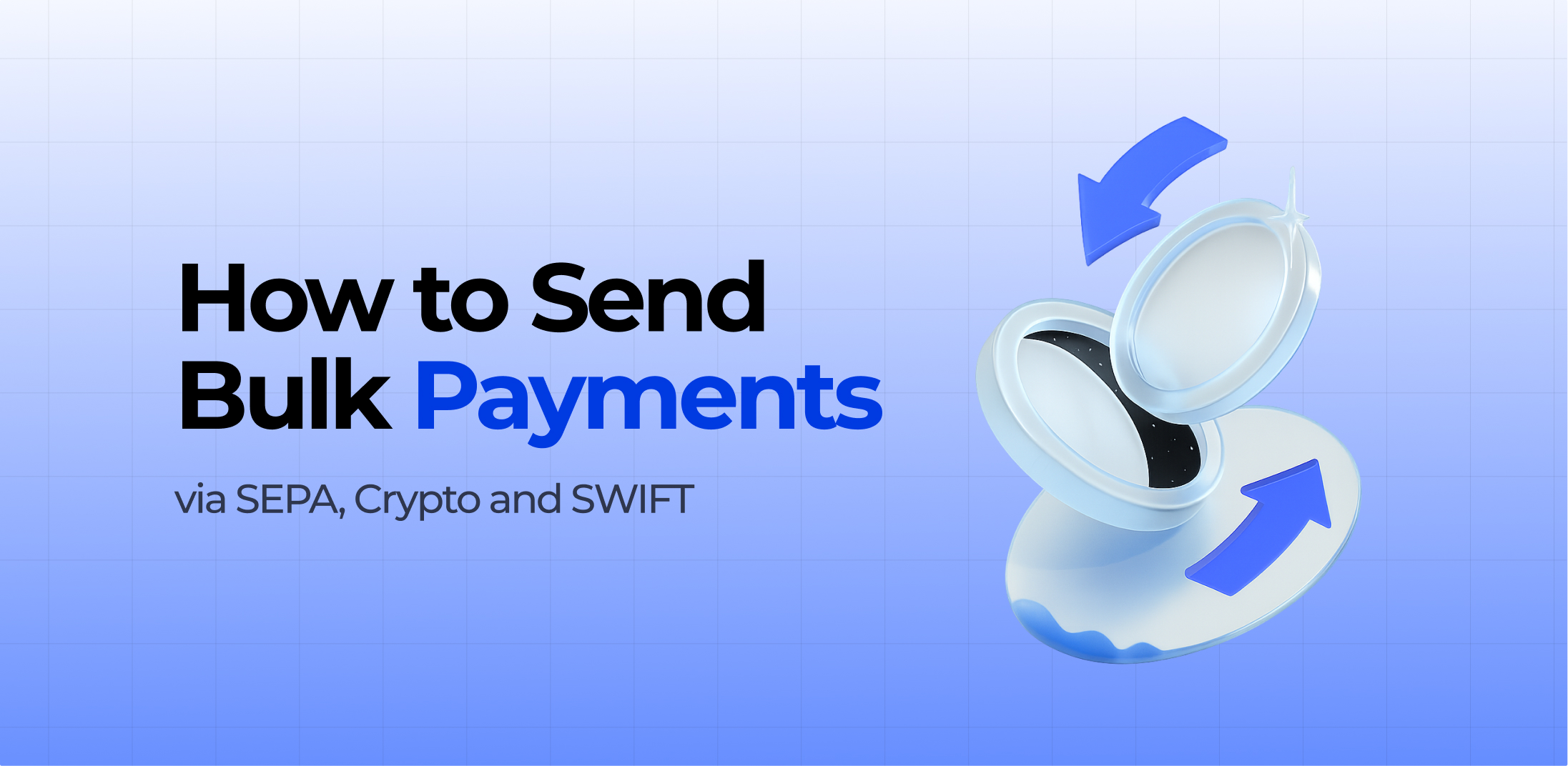International payments have become routine. Companies are reaching new markets, freelancers collaborate with clients overseas, and consumers often buy from foreign e-commerce platforms. Whether it’s paying a contractor in pounds, sending funds to a supplier in dollars, or subscribing to a service based in Asia, dealing with multiple currencies is now part of daily financial operations.
However, each cross-border transaction may come with hidden expenses – foreign exchange (FX for businesses) fees. These costs arise during currency conversion and often include inflated exchange rates, service fees, and bank surcharges. For businesses making regular international payments, these charges can accumulate quickly and erode profit margins.
Many FX costs go unnoticed, quietly reducing the value of each transaction. Over time, these hidden fees can become a significant financial drain. The good news is that there are effective ways to limit or eliminate them. In this article, we will describe how individuals and businesses can use the modern tools to streamline international payments and reduce unnecessary FX expenses.
What Are FX Fees and How Do They Work?
Foreign exchange (FX) fees refer to the charges applied when one currency is converted into another. These fees are common in international transactions, whether you’re paying for goods overseas, transferring funds, or making global business payments, and they can meaningfully influence the final amount sent or received. Both individuals and companies are affected by these costs during cross-border financial activity.
FX fees generally consist of two key elements: the spread and the commission. The spread is the gap between the mid-market rate, the actual rate at which currencies are traded globally, and the rate your financial institution offers you. This difference often serves as a built-in profit for the provider. Meanwhile, commissions are additional charges that can be fixed or percentage-based, depending on the size and nature of the transaction and the service used.
As an example, if a bank provides an exchange rate of 1 USD = 0.88 EUR while the mid-market rate is 0.91 EUR, the 0.03 EUR discrepancy per dollar becomes a cost in the rate itself. Now add a commission fee – say, $25 or 1% of the transferred amount– and your total FX cost rises further.
Traditional banks and online payment services frequently apply both components simultaneously. While some fintech solutions offer lower FX charges, they might restrict access to certain currencies or set minimum transaction amounts. To illustrate, a U.S.-based company transferring $10,000 to a UK partner could end up losing $300–$500 in FX costs alone, depending on the provider used, timing, and currency exchange rate offered.
The amount you pay in FX fees can fluctuate based on several key factors:
- Currency pair. Less commonly traded, or exotic, currencies tend to have wider spreads than widely used pairs such as USD/EUR or USD/GBP.
- Service provider. Banks often apply steeper fees compared to digital platforms that enable instant currency exchange and more competitive rates.
- Transaction timing. Exchange rates can shift during periods of high market volatility or outside of regular trading hours, often resulting in less favorable rates.
- Transfer amount. Larger payments can unlock more favorable exchange terms, particularly from FX providers that offer discounts based on transaction volume.
Gaining a clear understanding of how FX fees are calculated is essential for managing international payments more effectively. When businesses and individuals know what drives these costs, they can better evaluate their options, reduce unnecessary losses, and choose smarter methods for handling foreign currency, especially when cross-border transactions are frequent or large in scale.
The Cost of Paying in a Foreign Exchange Currency

Paying in a foreign currency, whether during international travel, while buying from global e-commerce stores, or settling invoices abroad, often comes with extra costs that go unnoticed. A major contributor to these inflated expenses is dynamic currency conversion (DCC). This feature appears at checkout or ATMs, asking if you’d prefer to complete the payment in your home currency rather than the local one. Although it might seem like the more straightforward option, it usually results in higher charges due to poor exchange rates.
What’s really happening is that DCC providers bypass the mid-market exchange rate, the most competitive rate provided, and instead offer you a marked-up conversion. The gap between this inflated rate and the actual mid-market rate includes a concealed spread, which, combined with flat transaction fees or commissions, significantly increases your overall cost. And because these charges are often buried in the fine print, most users don’t realize what they’re paying.
But DCC isn’t the only area where foreign exchange fees surface. They’re also common in card payments abroad, ATM withdrawals, and even online purchases in other currencies. Many banks and financial services apply opaque pricing models, leaving consumers and businesses with little visibility into the real exchange rate or associated fees.
For companies regularly engaging in international transactions, these unseen costs can drastically reduce profit margins. That’s why selecting the best business currency exchange platform is crucial – it ensures transparent pricing and more favorable exchange rates.
There’s also a psychological layer to this issue. Whether due to convenience or lack of awareness, many users repeatedly choose costlier payment options without realizing the long-term financial impact. Even small percentage markups, when multiplied across frequent payments, can lead to meaningful losses. Learning to spot and avoid the surprise costs is a vital step in managing cross-border finances more efficiently.
Common Traps That Lead to High FX Business Fees
Foreign currency exchange costs are an unavoidable part of global transactions, yet many individuals and companies could pay more. This often stems from common missteps in how international payments are managed. By identifying and steering clear of these pitfalls, you can reduce unnecessary expenses and gain more control over your global payment strategies.
Using Traditional Banks for Cross-Border Transfers
Banks are often the go-to option for sending funds internationally, but they typically aren’t the most economical. Conventional financial institutions tend to offer less competitive exchange rates. It is padding the spread between the market rate and the one you receive, while also tacking on flat fees or percentage-based charges. For businesses handling regular foreign payments, these outdated practices can lead to substantial financial leakage over time.
Accepting the Seller’s or ATM’s Currency Conversion (The DCC Trap)
Dynamic Currency Conversion (DCC) is a feature that offers to charge you in your home currency at checkout or at ATMs abroad. Although it appears convenient, it often results in a higher total cost. These conversions use exchange rates that include the markups.
Failing to Track Currency Exchange Trends
Currency markets fluctuate constantly based on economic indicators and global events. If you don’t monitor rates before conducting international payments, you could end up exchanging money at an unfavorable time. This lack of foresight can have a notable impact on large transfers or frequent transactions.
Ignoring FX Fees on Platforms Like PayPal
Payment systems such as PayPal often apply FX fees in two layers – a markup on the exchange rate and an additional service fee. These costs are frequently included in the fine print, catching both individuals and businesses off guard when the final amount hits their account.
Relying on Uniform Pricing Models from Generic Providers
Many payment platforms use a one-size-fits-all approach, charging the same FX margin regardless of the transaction size or currency involved. This fixed-pricing structure may not be suitable for businesses making frequent or large-value international payments. Opting for a more specialized provider with tiered or volume-based pricing can help reduce overall currency conversion expenses.
Smart Strategies to Minimize Instant FX Costs
When handling international transactions, minimizing unnecessary foreign exchange (FX) costs should always be a priority. With a few smart strategies, businesses and individuals can reduce the impact of these fees, ensuring they get the most value from their currency conversions. Below are some practical approaches to help lower FX expenses:
Choose Multi-Currency Accounts and Digital Wallets
One of the best ways to avoid high FX fees is by utilizing multi-currency accounts or digital wallets. These tools allow you to hold various currencies in one place, meaning you don’t have to convert funds every time you need to make an international payment. Instead of converting your money each time, you can keep the funds in the needed currency.
It can help save on conversion costs and achieve more favorable rates. Multi-currency accounts are particularly useful for businesses that make frequent international payments, offering them flexibility and protection from excessive conversion fees.
Use Real-Time Currency Conversion Tools
Monitoring exchange rates is crucial in minimizing FX fees. With currency conversion tools and apps that track real-time exchange rates, you can compare the current market rates with the rates provided by your payment platform.
These tools enable you to time your conversions better, ensuring that you make your transactions when the rates are most advantageous. Staying updated on currency fluctuations helps you avoid the risks of poor conversion rates, particularly for large transactions.
Compare FX Fees and Margins Across Different Platforms
It’s essential to understand that not all currency exchange services charge the same fees or offer the same rates. When planning a cross-border payment, take the time to compare FX margins and fees across various providers.
Traditional banks may charge higher rates and apply extra fees, while modern fintech platforms might offer lower margins and increased visibility. By shopping around, you can make sure you’re securing the best deal and not paying extra fees that add up over time.
Consider Using Batch Payments for Regular Transactions
For businesses that frequently pay international suppliers, contractors, or employees, batch payments are an excellent way to reduce FX costs. Rather than making multiple payments throughout the month, consolidating these into one or two larger transactions can help you save on transaction fees and possibly access better FX rates.
Batch payments are especially useful when managing payments across different currencies, as they provide an opportunity to optimize rates and reduce the frequency of conversions.
Set Alerts for Favorable Exchange Rates
Given how volatile exchange rates can be, timing your transactions is crucial. Setting up alerts for favorable exchange rates ensures that you can act quickly when the rate hits a favorable level. Many currency exchange platforms and apps offer this feature, notifying you when the market hits your desired rate.
By using these alerts, you can avoid missing out on better rates, reducing your FX costs over time and making your international transactions more cost-effective. By integrating these strategies into your payment processes, you can significantly reduce foreign exchange fees and improve the efficiency of international payments.
Business Solutions to Avoid High FX Fees

Managing foreign exchange (FX) fees is crucial for any business dealing with international transactions. With the right strategies and solutions in place, companies can significantly reduce FX costs, improve cash flow, and enhance financial performance. Below are some practical solutions to help businesses avoid excessive FX fees:
Leverage Specialized FX Services or Global Payment Platforms
To better control FX expenses, businesses should consider using dedicated FX services or international payment platforms. These platforms often provide more competitive rates, lower spreads, and reduced transaction costs compared to traditional banks.
Specifically designed for businesses engaging in cross-border payments, these services offer customizable solutions to meet specific currency needs. By using these specialized platforms, businesses can secure favorable exchange rates and avoid the high fees commonly associated with traditional banking services.
Utilize Virtual IBANs for Local Currency Payments
Virtual IBANs (International Bank Account Numbers) provide a strategic advantage for businesses in international trade. These virtual accounts enable companies to receive payments in local currencies, eliminating the need for costly currency conversions.
Instead of managing a centralized foreign currency account, businesses can open multiple local accounts, streamlining their cross-border payments and reducing the impact of FX costs. This approach simplifies payment management, enhances cash flow, and minimizes unnecessary conversions.
Automate Invoicing in the Client’s Currency
For businesses serving international clients, automating invoicing in the recipient’s local currency is an effective way to avoid FX fees. By issuing invoices in the client’s currency rather than your home currency, you eliminate the need for currency conversion, which typically incurs additional charges. This approach simplifies the payment process, enhances customer satisfaction, and ensures transparency, as clients can easily see the exact amount they owe in their own currency.
Minimize FX Conversions by Maintaining Multi-Currency Balances
To avoid frequent and costly conversions, businesses can maintain balances in multiple currencies. Using multi-currency accounts or digital wallets allows companies to hold and manage funds in different currencies, reducing the need for constant conversion.
By keeping balances in the currencies they deal with most frequently, businesses can bypass unnecessary FX fees and improve overall financial management, especially for companies dealing with regular international transactions.
Use FX Hedging for High-Volume Transactions
For businesses involved in large-scale, frequent international transfers, FX hedging can be a valuable strategy to protect against exchange rate fluctuations. Hedging allows companies to lock in a fixed exchange rate for future transactions, reducing the risk of unfavorable currency movements.
This approach is particularly beneficial for businesses with consistent, high-value payments to international clients or suppliers. It enables them to stabilize costs and better predict future expenses. By adopting these business solutions, companies can significantly reduce the impact of FX fees, streamline their cross-border transactions, and enhance their financial efficiency.
Tools and Platforms That Help You Save

Effectively managing foreign exchange (FX) expenses demands the right set of tools and platforms. Below is a comparison of well-known services, Wise, Revolut, PaySaxas, and traditional banks, outlining their advantages, disadvantages, and how APIs can streamline FX rate optimization within business operations.
Overview of Popular Services
Wise
Wise is renowned for its competitive exchange rates, transparency, and low fees. With the ability to hold and convert over 50 currencies, it is an excellent option for businesses and individuals handling international transactions regularly.
Revolut
Revolut provides an all-in-one platform for personal and business users, offering global payments, multi-currency accounts, and efficient FX rate management. It supports numerous currencies and offers fee-free international transfers for some account tiers.
PaySaxas
Specializing in tailored payment solutions, PaySaxas offers competitive FX rates and customizable options for businesses. It integrates seamlessly with other financial tools to optimize payment workflows for international transfers.
Traditional Banks
While traditional banks facilitate international payments, they often come with high fees and unfavorable exchange rates, making them inefficient for businesses with frequent cross-border transactions.
How APIs Support FX Rate Optimization
APIs play a key role in integrating FX rate optimization into business processes, enabling automated currency conversions and processing payments at optimal rates. Platforms like Revolut, and Wise provide API integrations, helping businesses streamline their international payments and reduce FX-related costs.
Considerations for High-Volume and Niche Users
Although Wise and Revolut are widely used, they can present challenges for high-volume users due to transaction limitations. PaySaxas, however, offers flexibility for businesses handling larger volumes of payments. Traditional banks, while offering secure solutions, lack the agility required by companies needing frequent high-volume transactions or specialized currency support. When selecting a platform, it’s important to consider transaction volume, frequency, and the specific currencies in play.
Conclusion: How PaySaxas Helps You Save on FX Fees
Foreign exchange (FX) fees are a growing expense for businesses and individuals conducting cross-border transactions. These fees can quickly accumulate, impacting profits and inflating operational costs. As global business activities expand, effectively managing FX expenses is crucial for maintaining competitiveness and improving the bottom line. PaySaxas provides an array of services designed to tackle these issues.
By offering FX rates close to the mid-market, PaySaxas ensures that businesses receive the best possible value for their currency exchanges, avoiding the high margins commonly charged by traditional banks. Its transparent fee structure offers businesses clear insight into their costs, eliminating hidden fees that could impact their financial planning. A key advantage of PaySaxas is its provision of direct IBAN accounts in various currencies, allowing businesses to make and receive payments in local currencies.
This reduces the need for frequent conversions, saving both time and money. PaySaxas also offers bespoke FX solutions for high-volume businesses, tailored to meet the specific demands of large-scale international transactions, ensuring that businesses can handle significant payments efficiently and at favorable rates. Moreover, PaySaxas features real-time rate monitoring and auto-conversion, allowing businesses to track currency fluctuations and convert funds at the most advantageous moments. By automating these processes, businesses can make more cost-effective payments and minimize exposure to unfavorable exchange rate movements.








